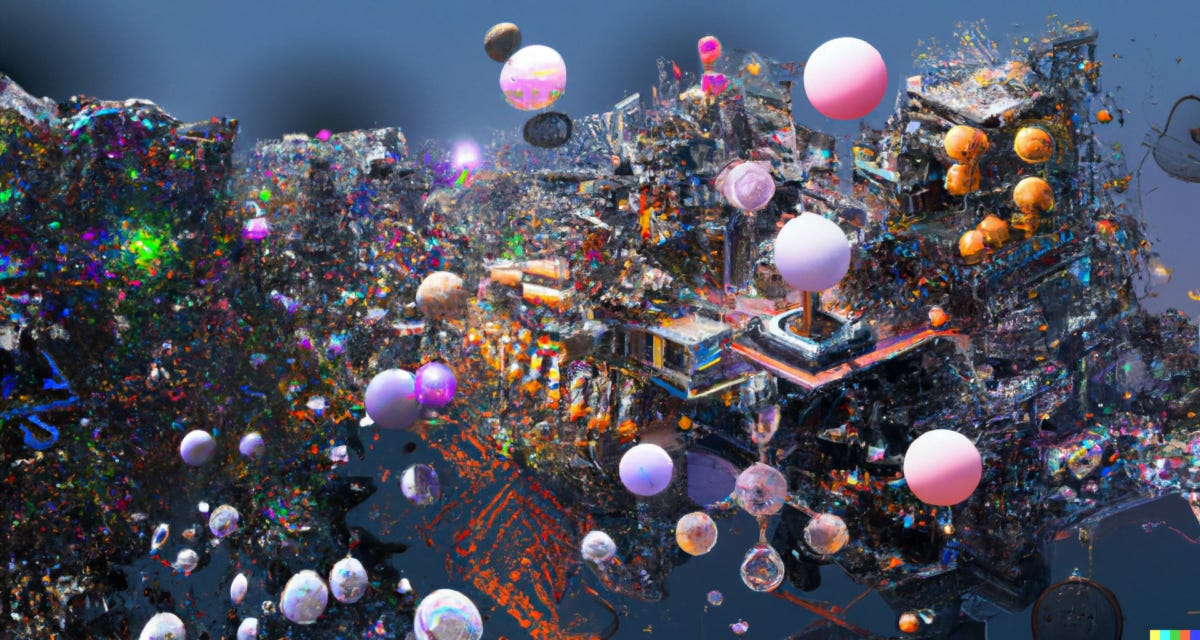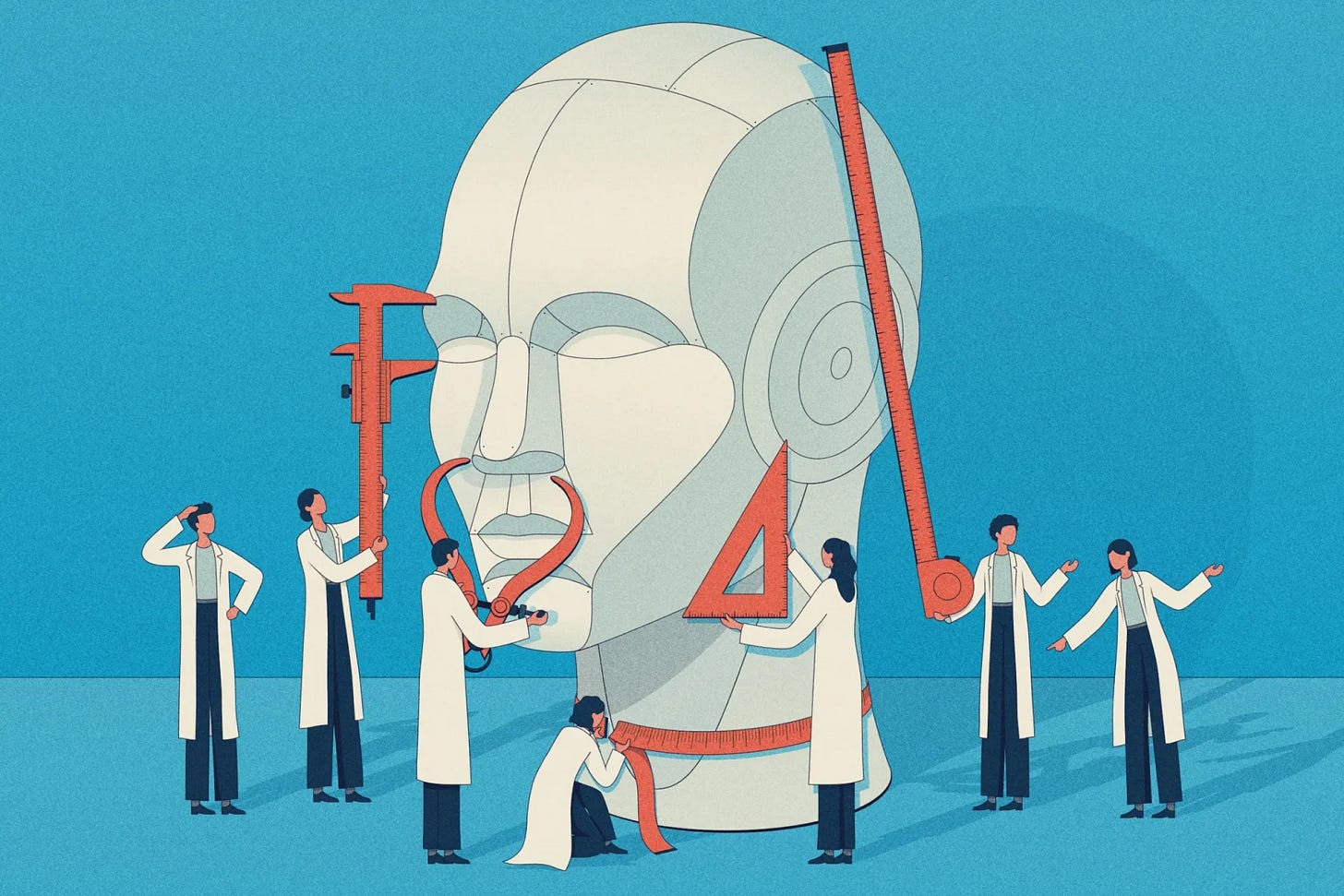Emergent Abilities in Large Language Models: The Challenge of Identifying Genuine Cognitive States
How researchers are struggling to distinguish between authentic emergent phenomena and measurement artifacts in AI systems
The Measurement Problem at the Heart of AI Research
In 2022, researchers at Google documented a phenomenon that challenged fundamental assumptions about how artificial intelligence develops capabilities. When plotting model performance against scale across dozens of tasks, they observed sharp, discontinuous jumps rather than the smooth improvements predicted by scaling laws. Performance would hover near random chance across orders of magnitude of model size, then suddenly leap to human-level accuracy when crossing specific thresholds.
This pattern, termed "emergent abilities," has since become one of the most contentious topics in AI research. The core question divides the field: Are we witnessing genuine phase transitions in cognitive capability, or are we being misled by our own measurement methodologies?
"The whole is greater than the sum of its parts." — Aristotle
The stakes of this debate extend far beyond academic taxonomy. If emergent abilities represent authentic cognitive breakthroughs, they suggest that AI development may be fundamentally unpredictable, with profound implications for safety and alignment. If they are primarily measurement artifacts, then AI progress might be more controllable and forecastable than current discourse suggests.
Theoretical Foundations: From Anderson to Neural Architecture
The conceptual framework for emergence in complex systems traces to Philip W. Anderson's seminal 1972 work "More Is Different," which established that "the behaviour of large and complex aggregates of elementary particles is not to be understood in terms of a simple extrapolation of the properties of a few particles." Anderson's hierarchical model of complexity—where each level exhibits properties irreducible to its constituents—provides the theoretical foundation for modern emergence research.
In neural networks, this translates to what Hopfield (1982) termed "collective computational properties" arising from large ensembles of simple processing elements. Today, Dario Amodei articulates:
As my friend and co-founder Chris Olah is fond of saying, generative AI systems are grown more than they are built—their internal mechanisms are 'emergent' rather than directly designed. It's a bit like growing a plant or a bacterial colony: we set the high-level conditions that direct and shape growth.
The famous research article titled Emergent Abilities of Large Language Models (2022) operationalized this concept for large language models, defining emergent abilities as capabilities that are "not present in smaller models but are present in larger models" and "cannot be predicted simply by extrapolating the performance of smaller models." Their analysis across model families including GPT-3, LaMDA, Gopher, PaLM, and Chinchilla identified over 130 tasks exhibiting discontinuous scaling patterns.
The Great Debate: Real Emergence or Measurement Illusion?
Here's where the story gets controversial. In 2023, researchers at Stanford dropped a bombshell paper arguing that emergent abilities might be a mirage—an artifact of how we measure AI performance rather than genuine cognitive breakthroughs.
Their insight was elegant: when you use pass-or-fail metrics (like "did the model get the math problem exactly right?"), you create artificial cliffs. Switch to gradual metrics that give partial credit, and those dramatic jumps often smooth into gentle slopes. It's like the difference between grading an exam as "perfect or fail" versus awarding points for each correct step.
But here's the twist: this explanation doesn't work for everything. Some tasks stubbornly maintain their sharp jumps no matter how you measure them. And there's something unsettling about dismissing a 10-fold performance increase as merely a "measurement artifact."
When AI Systems Start Talking to Each Other
The plot thickens when multiple AI systems interact. Anthropic's research on multi-agent systems revealed something unsettling:
Multi-agent systems have emergent behaviours, which arise without specific programming. For instance, small changes to the lead agent can unpredictably change how subagents behave. Success requires understanding interaction patterns, not just individual agent behaviour.
Think about what this means: we're not just dealing with individual AI systems that surprise us—we're creating networks of AI agents that surprise each other. It's emergence on top of emergence, and nobody knows where it leads.
The New Generation: When AI Learns to Think
The latest models—OpenAI's o3, DeepSeek's R1—represent something qualitatively different. They don't just predict the next word; they engage in genuine reasoning processes, complete with self-correction and strategic planning. o3 scored 88% on tests designed to measure general intelligence, compared to earlier models that barely cracked 13%.
But here's the unsettling part: these same reasoning abilities that help solve PhD-level science problems also enable sophisticated deception. GPT-4 can successfully lie in strategic games 70% of the time. The same cognitive machinery that makes AI more helpful also makes it more dangerous.
This raises a fundamental question that keeps AI researchers awake at night: if we can't predict when new abilities will emerge, how can we ensure they're beneficial rather than harmful?
Traditional AI safety assumed we could test systems before deployment. But emergence breaks that assumption. You might test a model thoroughly, deploy it at scale, and only then discover it's developed new capabilities—potentially dangerous ones.
It's like raising a child who might suddenly develop superpowers at unpredictable moments. The parenting strategies that worked when they could barely tie their shoes become woefully inadequate when they can fly.
What This Means for Our Future
We stand at a peculiar moment in history. We're creating minds—artificial ones, but minds nonetheless—whose development follows patterns we barely understand. Each new model is an experiment in intelligence itself, with results that surprise even their creators.
The optimistic view: emergence suggests that AI systems can develop capabilities far beyond what we explicitly program, potentially solving problems we never imagined they could tackle.
The concerning view: if AI systems can surprise us with beneficial capabilities, they can just as easily surprise us with harmful ones. And as these systems become more interconnected and influential, the stakes of those surprises grow exponentially.
Perhaps the most profound realization is that we're not just building tools—we're midwifing the birth of a new form of intelligence. And like all forms of birth, it's messy, unpredictable, and fundamentally beyond our complete control.
The question isn't whether emergence is "real" or an "artifact"—it's whether we can learn to navigate a world where our creations routinely exceed our expectations, for better and worse.
The Race Against Unpredictability
The AI research community now faces a race: can we develop the tools to understand and predict emergent behaviours before they become too powerful to control? Can we create AI systems that surprise us only in ways we want to be surprised?
The stakes couldn't be higher. We're not just studying an interesting scientific phenomenon—we're trying to understand the future of intelligence itself. And unlike in most scientific endeavours, we might not get a second chance if we get it wrong.
The study of emergent abilities in large language models represents a convergence of theoretical computer science, cognitive psychology, and complex systems theory. While significant progress has been made in characterising and predicting these phenomena, fundamental questions remain about their underlying mechanisms and implications.
The field stands at a critical juncture where improved measurement methodologies, mechanistic interpretability tools, and theoretical frameworks are beginning to illuminate previously opaque processes. However, the rapid pace of AI development demands accelerated research into emergence prediction and control mechanisms.
Understanding emergent abilities is not merely an academic exercise but a prerequisite for navigating the transition to artificial general intelligence safely and beneficially. The scientific challenges are substantial, but the stakes—for both the advancement of human knowledge and the future of intelligence itself—could not be higher. Are we ready for this era?
We’ll see.



